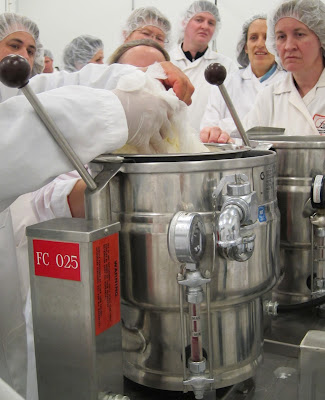A Handful of Rice
“I don’t want you just to sit down at the table.
I don’t want you just to eat, and be content.
I want you to walk out into the fields
where the water is shining, and the rice has risen.
I want you to stand there, far from the white tablecloth.
I want you to fill your hands with the mud, like a blessing.
(Rice, Mary Oliver)
Rice – very few of us don’t have rice in our cupboards. In fact, it’s the primary food source for half the world’s population. But where and when was it first domesticated? How is it grown and cooked? I decided to do some research.
History
Recent evidence indicates that rice (oryza sativa) has been grown for thousands of years across a wide band of land from northern India to southern China. Short-grained (japonica) rice appears to have originated in China, whereas long-grained rice, which is genetically distinct, originated in India. Researchers believe that short-grained rice spread from China to India where farmers deliberately hybridized it with the local rice to produce long-grained (indica) rice.
The domestication of rice appears to have been a slow process. Small amounts of rice were grown in the Yangtze Valley in 5000 BC, but the local inhabitants, who were hunter-gatherers, primarily ate acorns, water chestnuts, and fish.
Interestingly enough, several thousand years after Asian farmers domesticated rice, African farmers created a species of their own (oryza glaberrima) near the Niger river in West Africa. Although the two varieties were created independently, the crop’s genome was altered in a similar fashion in both cases. It is still grown for local sustenance, but you’re unlikely to find it in a grocery store.
A recent discovery indicates that inhabitants of the southwestern Amazon basin in Brazil also modified wild rice to produce larger grains. Even more surprisingly, they were growing rice and corn simultaneously. Rice stopped being grown when the Europeans arrived.
Habitat
90% of the world’s rice is grown in tropical countries with high rainfall, such as Thailand, India, and Indonesia. It can be grown in a wide variety of different conditions – from irrigated paddyfields in the temperate climate of northeast Asia to tropical deltas where the flood water can rise several meters and from sea level to high in the Himalayas. Some rice is grown in so-called dry conditions, but it still requires at least 800 mm of rainfall.
Varieties
Rice is produced by removing the husk. This produces brown rice, which can be further refined to produce white rice: “Typically, the layers of bran and the germ will be abraded off the kernel, which is then polished to remove the aleurone layer, a very thin layer of oil, minerals, protein, and vitamins. (That layer's high fat content increases the likelihood of spoilage, so removing it improves the storage life of the grain.) What you're left with is polished white rice.”
Japonica rice has short fat grains that are usually sticky when cooked. Sushi rice benefits from japonica’s stickiness, which helps the sushi to stick together. Arborio and carnoroli are short-grained rice varieties from Italy. They take advantage of the high amounts of amylopectin starch in japonica rice to produce creamy risottos.
Indica rice is long-grained and aromatic. It contains less amylopectin starch and more amylose so the grains remain distinct and not sticky when cooked. One of the best known varieties is basmati, which is often used in pilaf or biryani. Jasmine rice is grown primarily in Thailand. The grains are shorter and plumper than basmati and have a more pronounced aroma, especially when they’re fresh. Calasparra and bomba varieties are recommended for paella.
If you’re interested in varying the type of rice you eat, I recommend Lotus Foods’ organic, heirloom, fair trade rice. Forbidden rice from China is deep purple. There’s also a pink rice from Madagascar and a tri-colour blend grown in West Java’s mineral-rich volcanic soil.
Lundberg Family Farms, based in California, produce twenty different varieties and blends of grains, including a biodynamic short-grain brown rice and a red jasmine Thai.
Culture
Rice dishes are a part of so many different cultures, but online research indicated that techniques, spices, and additional ingredients can vary tremendously. There’s rivalry between African countries as to which one makes the best version of jollof rice, a spicy dark-orange dish commonly served at social gatherings. Rice tends to be cooked separately from the other ingredients when making biryani and there are many regional variations, some of which emphasize saffron, others rosewater, mint, or tamarind sauce. Ochazuke involves cooked rice covered in green tea, while kamameshi was traditionally cooked in an iron kettle and left to burn a little on the bottom.







Comments